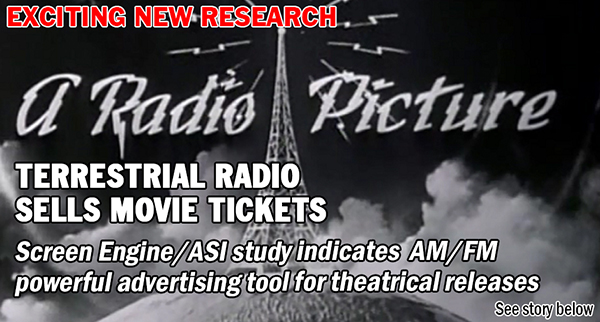By Bill Bartholomew
Talk Host/Podcaster/Journalist/Musician
 Folks in the Gen Z and millennial demographics are heavily engaged in political issues, care about news in their communities and the world, and are constantly bombarded with content. So why are they less likely to tune into and interact with news/talk radio than older demographics?
Folks in the Gen Z and millennial demographics are heavily engaged in political issues, care about news in their communities and the world, and are constantly bombarded with content. So why are they less likely to tune into and interact with news/talk radio than older demographics?
Talk radio has historically skewed older, and from an ad portfolio standpoint, is often targeted at the coveted 35-54 and 55+ demographics. However, in a world where social media influencers and podcasters supply information to millions of young consumers, news/talk radio should be able to effectively compete for the ears of younger generations in a comparable, if not expanded way.
For all of the anecdotal and hard evidence that terrestrial radio may be trending in a downward direction, the format continues to have a vast reach. It is convenient to engage with it in automobiles, and occasionally in home or office settings. Yet, while younger generations listen to radio, news/talk is not the format that they turn to by and large.
Unlike many digital-first content producers, radio retains a unique quality: authority. By virtue of editorial standards, FCC regulation and brand – things that social media and podcasts often lack – radio has the unique ability to deliver credible, vetted, nuanced and universally trustworthy content that can instantaneously adapt to meet the needs of the moment. This is true in everything from natural disasters to rapidly evolving breaking news stories, providing a channel for immediate, reactionary insight and analysis.
There are several steps that news/talk radio should pursue in earnest to adapt to the current climate of content consumption, particularly by younger listeners, that can reach, and most importantly, retain broader, younger, more diverse and more engaged audiences.
- Introduce younger people into the conversation.
Too often, Gen Z and millennials are skewered by older hosts, mocked for their perceived naivety, unchecked optimism and me-first approach. While some of these qualities can be accurate, that approach reflects a disconnect between older generations and the experience of younger ones. Millennials and Gen Z have grown up in a post-9/11 world replete with “endless wars”, the fallout from the 2008 financial crisis, runaway student debt, a massive housing crisis, the mental health stressors of social media, Covid19’s impact on traditional youth experiences, climate change, a deeply bifurcated political environment and a constantly evolving quest for social justice. Through these experiences, younger generations offer an important perspective that should be assigned the same news value as experts from older generations.
Are you discussing shifts towards electric vehicles? Bring on someone from Gen Z to share their perspective on why steps towards carbon neutrality are important to them. Engaging a conversation on the president’s approval rating? Perhaps younger conservative and leftist voices should be included in the conversation. Discussing immigration? How about the perspective of a younger member of a Latino organization?
By giving younger generations and more diverse guests a platform, stations can simultaneously expand their content and reach. With consistency, the station’s brand will become more familiar to younger potential listeners who may be inclined to tune in to hear someone who shares their identity and perspective on – here’s that word again – a platform of authority. Let the guest do the work of establishing the credibility and importance of your station or talk show to younger audiences by posting about their appearance on social media, sharing audio clips and mentioning to their peers. It will build familiarity and trust among those generations, who in turn, will begin to tune in on a more regular basis.
Stations should also consider bringing more younger, competent voices into on-air roles, whether that be through reporting, segments, fill-in hosts, weekend shows or full-time hosts.
- Meet the audience where they are: their phones.
As mentioned above, the convenience of simply turning on AM/FM radio is highly appealing in automobiles, though as Apple Carplay continues to adapt and evolve, digital-first content is likely to become as simple and convenient in the near future.
Talk radio needs to make consuming their product on smartphones as simple and direct as turning on a traditional radio. This means no clunky websites, no lengthy pre-roll spots, a reliable stream connection and a “one touch” means of turning on and off the station. This should also mean expanding talk shows to high-quality video livestreams, following in the footsteps of the top YouTube and Twitch performers; developing unique content for TikTok and Instagram; building podcasts that are focused on specific issues, and; providing interaction via text and chat.
Radio has the ability to be the ultimate livestreamer, social media influencer and podcaster, but rarely harnesses these platforms in a meaningful way.
It is not enough to simply strive to “expand a digital presence”; stations and shows must engage in the hard work of building platform-specific content with their brands.
- Music, cultural references and themes for the modern age.
A few weeks ago on a seemingly benign episode of the TV show FOX NFL Sunday, panelists Jimmy Johnson and Terry Bradshaw offered an example of the type of cultural adaptation that sophisticated writers and producers provide their brands. While describing a fight between two football players, Mr. Johnson said something to the effect of “when it comes to these two, what’s that Taylor Swift song?”, and then in synch with Mr. Bradshaw, “bad blood!”. It is highly unlikely that these two 70+ men listen to Taylor Swift’s music with any regularity or would simultaneously pull the “Bad Blood” reference. Yet, with excellent preparation that played into the greater cultural moment as well as the specific, current Taylor Swift/NFL overlap, in a six-second span, FOX NFL Sunday was able to give the illusion that their panelists are contemporary, hip and plugged into “what is going on”. Is your station or show plugged into what’s going on? Do you use contemporary music for bumps? Are your images – including headshots and social content – modern, interesting and engaging or are they more akin to a miscellaneous real estate agent? You are a performer in an entertainment business that, while certainly paying homage to the past and lineage of the industry, must be contemporary in aural and visual presentation. This goes for everything from wardrobe on video and in photo to fonts on graphic design.
How often do you or your producer read Pitchfork to learn about new music that is breaking this week? How often do you or your producer read Variety to understand major trends that are happening in the broader entertainment industry? What live events are you broadcasting from, covering and building partnerships with? You should strive to be cutting edge.
- We need a friend now more than ever.
This is something that goes for all audiences, but particularly for younger ones. It’s OK, in fact, great to be yourself, present yourself from your generation and retain the authoritative stance that has built your brand. Take a look at the success that sports talker Mike Francesa enjoyed by leaning into his persona – and in turn – developing legions of younger listeners that fell in love with his dad-like delivery and frequent meltdowns.
Few things are as uncomfortable to see as a 40+ person dressing or acting like a teenager. Younger listeners want that senior, experienced, trusted friend to entertain them, inform them, and at times, tell them that everything is going to be OK. You can help make sense of the world for younger audiences, something that is absolutely essential in the modern era.
Through attracting younger listeners by including them in the conversation, effectively delivering content on smartphones, presenting a cutting-edge entertainment product and continuing to serve as a trusted friend, news/talk radio can greatly expand its reach, relevance and revenue.
To that point, some younger listeners who discover a radio station or show via any of the above entry points will likely work backwards to the traditional AM/FM dial. Like the resurgence of vinyl records, AM radio in particular has the opportunity to become a hip delivery format for discerning younger listeners.
The big question is: are radio companies, stations and hosts prepared to do the hard work of reimaging their product?
Share this with your network
 2) Marketers and media agencies significantly overestimate audience shares to Pandora/Spotify and massively underestimate AM/FM radio audiences; and 3) Interestingly, as older demographics flock to podcasts, the median age of the podcast audience ages sharply from 29 in 2017 to 39. The study notes that “in 2017, podcasts’ daily reach was greatest among 18-24s. Eight years later, podcasts’ daily reach has surged, especially in older demographics. The older the age group, the greater the growth in the podcast daily audience. Today, podcasts’ greatest reach centers on 25-44s, with significant growth among 45-64s.” See the full blog post here.
2) Marketers and media agencies significantly overestimate audience shares to Pandora/Spotify and massively underestimate AM/FM radio audiences; and 3) Interestingly, as older demographics flock to podcasts, the median age of the podcast audience ages sharply from 29 in 2017 to 39. The study notes that “in 2017, podcasts’ daily reach was greatest among 18-24s. Eight years later, podcasts’ daily reach has surged, especially in older demographics. The older the age group, the greater the growth in the podcast daily audience. Today, podcasts’ greatest reach centers on 25-44s, with significant growth among 45-64s.” See the full blog post here.


 regularly listen to AM or FM.” Company SVP of research Elizabeth Falke states, “The bottom line here is just how much people value having easy access to both AM and FM radio in their cars. Consumers want radio for a variety of different reasons that are largely unique to local radio – everything from discovering what new music matters to weather updates, the latest sports reports and local news and events.” As the AM Radio for Every Vehicle Act of 2025 makes its way through congress, Falke says its important that manufacturers understand the absence of radio would also influence new car purchasing decisions. The study found that 96% of Americans would miss radio if it were removed and 89% say the lack of a radio would likely keep them from buying that vehicle. She concludes, “This research is crucial for car manufacturers as we see that, immediately, half of consumers wouldn’t even look at buying a car without a radio. The ease and simplicity of radio is embedded in the lives of drivers consuming various forms of audio in their cars.”
regularly listen to AM or FM.” Company SVP of research Elizabeth Falke states, “The bottom line here is just how much people value having easy access to both AM and FM radio in their cars. Consumers want radio for a variety of different reasons that are largely unique to local radio – everything from discovering what new music matters to weather updates, the latest sports reports and local news and events.” As the AM Radio for Every Vehicle Act of 2025 makes its way through congress, Falke says its important that manufacturers understand the absence of radio would also influence new car purchasing decisions. The study found that 96% of Americans would miss radio if it were removed and 89% say the lack of a radio would likely keep them from buying that vehicle. She concludes, “This research is crucial for car manufacturers as we see that, immediately, half of consumers wouldn’t even look at buying a car without a radio. The ease and simplicity of radio is embedded in the lives of drivers consuming various forms of audio in their cars.”  sales effect within six months. Podcasts and AM/FM radio also performed strongly in long-term brand building with impressive brand effects beyond six months. The story notes that the Effie Awards are based on growth factors such as incremental revenue, profit, market share, new customers, loyalty, and price sensitivity. Brands that win Effie Awards drive impressive revenue, profit, and brand effects. The stronger the Effie performance, the greater the ROI and business results. The key takeaway is that “some media do well with short-term impact but have a harder time creating future demand (contesting, promotions, search, digital display). Other media are adept at brand building and creating future demand but have difficulty with short-term sales effect (creators/influencers, TV, PR, online video/CTV, and print). AM/FM radio and podcasts are unique in their ability to drive both short-term sales as well as long-term brand effects.”
sales effect within six months. Podcasts and AM/FM radio also performed strongly in long-term brand building with impressive brand effects beyond six months. The story notes that the Effie Awards are based on growth factors such as incremental revenue, profit, market share, new customers, loyalty, and price sensitivity. Brands that win Effie Awards drive impressive revenue, profit, and brand effects. The stronger the Effie performance, the greater the ROI and business results. The key takeaway is that “some media do well with short-term impact but have a harder time creating future demand (contesting, promotions, search, digital display). Other media are adept at brand building and creating future demand but have difficulty with short-term sales effect (creators/influencers, TV, PR, online video/CTV, and print). AM/FM radio and podcasts are unique in their ability to drive both short-term sales as well as long-term brand effects.”  that listening has grown across all demographics and time periods versus the Fall 2024 Nationwide report. Some key takeaways are: 1) Among persons 25-54, total U.S. AM/FM radio AQH has grown +6%, powered by a +19% increase in the Portable People Meter markets; 2) Weekends and nights have the greatest growth compared to Fall 2024; 3) Versus Fall 2024, Spring 2025 total U.S. audience growth is greater among men versus women and has increased in older demographics; and 4) Total U.S. Spring 2025 audience growth is up significantly among college graduates and upscale $75K+ income Americans. The blog post notes that the PPM audience growth is due to Nielsen’s three-minute qualifier modernization, which provides a significantly more comprehensive and realistic definition of AM/FM radio’s audience and their listening behavior. Nielsen found 23% of PPM listening occasions were three or four minutes. Under the old five-minute listening qualifier rule, none of this tuning would have received listening credit. Effective with the January 2025 PPM survey, Nielsen began crediting tuning occasions that are three minutes or greater.
that listening has grown across all demographics and time periods versus the Fall 2024 Nationwide report. Some key takeaways are: 1) Among persons 25-54, total U.S. AM/FM radio AQH has grown +6%, powered by a +19% increase in the Portable People Meter markets; 2) Weekends and nights have the greatest growth compared to Fall 2024; 3) Versus Fall 2024, Spring 2025 total U.S. audience growth is greater among men versus women and has increased in older demographics; and 4) Total U.S. Spring 2025 audience growth is up significantly among college graduates and upscale $75K+ income Americans. The blog post notes that the PPM audience growth is due to Nielsen’s three-minute qualifier modernization, which provides a significantly more comprehensive and realistic definition of AM/FM radio’s audience and their listening behavior. Nielsen found 23% of PPM listening occasions were three or four minutes. Under the old five-minute listening qualifier rule, none of this tuning would have received listening credit. Effective with the January 2025 PPM survey, Nielsen began crediting tuning occasions that are three minutes or greater.  streams) make up 34% of the daily audio time of U.S. consumers ages 13+. Looking at what makes up the other 66% of daily audio time it’s interesting to note that media platforms that didn’t exist (or were very new) 20 years ago make up a combined 54% of daily audio time. Those media platforms are streaming music (23%), YouTube (14%), podcasts (10%), and SiriusXM (7%).
streams) make up 34% of the daily audio time of U.S. consumers ages 13+. Looking at what makes up the other 66% of daily audio time it’s interesting to note that media platforms that didn’t exist (or were very new) 20 years ago make up a combined 54% of daily audio time. Those media platforms are streaming music (23%), YouTube (14%), podcasts (10%), and SiriusXM (7%).  and companies seeking to hire, especially among passive job seekers who are less likely to use job sites: Nine out of 10 job seekers are reached by ad-supported audio. Over-the-air AM/FM radio reaches nearly 80% of active and passive job seekers. Six out of 10 active job seekers are reached by podcasts; 2) AM/FM radio streaming’s audience growth has surged among job seekers: Since 2021, AM/FM radio streaming has soared in usage among both active and passive job seekers. Six out 10 active job seekers are reached by AM/FM radio streaming; 3) Passive job seekers outnumber active job seekers by +50%. Active job seekers are growing: The optimal source for filling positions are passive job seekers who outnumber active job seekers by +50%. Active job seekers have surged from 15% in 2018 to 24% currently; and 4) Advertising works: There is a very linear relationship between ad spend, share of voice, ad recall, and market share. The greater the ad spend, the greater the ad recall and market share.
and companies seeking to hire, especially among passive job seekers who are less likely to use job sites: Nine out of 10 job seekers are reached by ad-supported audio. Over-the-air AM/FM radio reaches nearly 80% of active and passive job seekers. Six out of 10 active job seekers are reached by podcasts; 2) AM/FM radio streaming’s audience growth has surged among job seekers: Since 2021, AM/FM radio streaming has soared in usage among both active and passive job seekers. Six out 10 active job seekers are reached by AM/FM radio streaming; 3) Passive job seekers outnumber active job seekers by +50%. Active job seekers are growing: The optimal source for filling positions are passive job seekers who outnumber active job seekers by +50%. Active job seekers have surged from 15% in 2018 to 24% currently; and 4) Advertising works: There is a very linear relationship between ad spend, share of voice, ad recall, and market share. The greater the ad spend, the greater the ad recall and market share. 

 If you saved back issues from when TALKERS was a print tabloid, dig-down about 20 years into the stack. A couple times a year beginning then, I was reporting from conferences then called The Podcast and New Media Expo, which later evolved into NMX and BlogWorld and other incarnations.
If you saved back issues from when TALKERS was a print tabloid, dig-down about 20 years into the stack. A couple times a year beginning then, I was reporting from conferences then called The Podcast and New Media Expo, which later evolved into NMX and BlogWorld and other incarnations. driving brand preference is ‘mental availability’: how well known a brand is, and how easily it comes to mind. Brands with low mental availability tend to struggle, rejected in favor of more familiar rivals. Or not considered in the first place. Brands with high mental availability don’t have to push so hard to sell, so tend to have higher market shares and better margins.” The authors also advise, “Always aim to get more customers from all segments of the market. It’s the main way brands grow.” The blog post concludes that AM/FM radio makes your media plan better by increasing reach. One example is illustrated as follows: Edison’s “Share of Ear” study of ad-supported audio reveals the combined persons 18+ daily reach of Pandora and Spotify is only 12% of Americans. Adding podcasts causes reach to surge to 29%. The introduction of AM/FM radio lifts daily reach to 74%.
driving brand preference is ‘mental availability’: how well known a brand is, and how easily it comes to mind. Brands with low mental availability tend to struggle, rejected in favor of more familiar rivals. Or not considered in the first place. Brands with high mental availability don’t have to push so hard to sell, so tend to have higher market shares and better margins.” The authors also advise, “Always aim to get more customers from all segments of the market. It’s the main way brands grow.” The blog post concludes that AM/FM radio makes your media plan better by increasing reach. One example is illustrated as follows: Edison’s “Share of Ear” study of ad-supported audio reveals the combined persons 18+ daily reach of Pandora and Spotify is only 12% of Americans. Adding podcasts causes reach to surge to 29%. The introduction of AM/FM radio lifts daily reach to 74%. 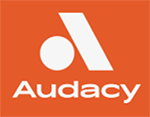 traffic news, drivers turn to local radio over social media or phone apps. The study asked drivers about their use of their infotainment system use and 69% said they use it for first for controlling audio content; 68% said navigation was their primary use, and 66% said they use it first for making phone calls. Audacy adds, “Today’s drivers – especially the tech-savvy ones – expect their Audio to follow them everywhere. Whether they’re finishing a podcast from the office to the car or switching from music on the road to the gym, they want their content to move with them. Nearly all AI intenders (93%) say seamless podcast listening is a must, and 73% say the same about radio.”
traffic news, drivers turn to local radio over social media or phone apps. The study asked drivers about their use of their infotainment system use and 69% said they use it for first for controlling audio content; 68% said navigation was their primary use, and 66% said they use it first for making phone calls. Audacy adds, “Today’s drivers – especially the tech-savvy ones – expect their Audio to follow them everywhere. Whether they’re finishing a podcast from the office to the car or switching from music on the road to the gym, they want their content to move with them. Nearly all AI intenders (93%) say seamless podcast listening is a must, and 73% say the same about radio.”  voracious consumers of movies in the theater and films on streaming services. They are first to see a movie in the theater on opening weekend and when films debut on streaming services; and 2) Versus linear TV viewers, audio listeners are far more likely to see movies in the theater and indicate a greater willingness to watch content. Looking at data about marketing moves and streaming video, the study finds that 1) Linear TV advertising spend for theatrical releases and video streaming brands is 30X audio. Despite this, TV viewers show low awareness of new films and low interest in upcoming films and streaming service subscriptions; and 2) Audio (AM/FM radio, streaming audio, and podcasts) should become a much greater allocation in the entertainment marketing media plan. Reallocating 20% of linear TV theatrical and streaming video media plans to AM/FM radio doubles campaign reach with no additional cost.
voracious consumers of movies in the theater and films on streaming services. They are first to see a movie in the theater on opening weekend and when films debut on streaming services; and 2) Versus linear TV viewers, audio listeners are far more likely to see movies in the theater and indicate a greater willingness to watch content. Looking at data about marketing moves and streaming video, the study finds that 1) Linear TV advertising spend for theatrical releases and video streaming brands is 30X audio. Despite this, TV viewers show low awareness of new films and low interest in upcoming films and streaming service subscriptions; and 2) Audio (AM/FM radio, streaming audio, and podcasts) should become a much greater allocation in the entertainment marketing media plan. Reallocating 20% of linear TV theatrical and streaming video media plans to AM/FM radio doubles campaign reach with no additional cost.  YouTube with ads, SiriusXM talk channels, free versions of streaming audio sources, and podcasts. Breaking it down demographically, time spent with ad-supported sources is highest among Americans age 55+, with 75% of their audio time spent with ad-supported audio. While the 18-34 demographic spends the majority of its audio time with ad-supported audio sources, 46% of its listening time is spent with ad-free audio. Edison says, “The strength of ad-free audio with this age group is not surprising considering that younger Americans spend more time on platforms that make removing advertisements easy and not terribly expensive, such as Spotify and YouTube.”
YouTube with ads, SiriusXM talk channels, free versions of streaming audio sources, and podcasts. Breaking it down demographically, time spent with ad-supported sources is highest among Americans age 55+, with 75% of their audio time spent with ad-supported audio. While the 18-34 demographic spends the majority of its audio time with ad-supported audio sources, 46% of its listening time is spent with ad-free audio. Edison says, “The strength of ad-free audio with this age group is not surprising considering that younger Americans spend more time on platforms that make removing advertisements easy and not terribly expensive, such as Spotify and YouTube.” ABX AM/FM radio creative study for RAB proves legendary marketing professor Mark Ritson was right; 2) Wear-out of AM/FM radio ads is virtually non-existent: Only two of 25,000 ads showed a decline in some creative effectiveness metrics. Two major creative effectiveness measures, branding and messaging, showed no wear-out; 3) The two ads showing differences were at the top end of cumulative spending and time in market: Two years in market and $8M+ of spend is where creativeness effectiveness might start to wane; 4) Repeat testing of 10 of the 12 longest running AM/FM radio ads reveals no statistically significant erosion; and 5) The giants of marketing effectiveness and creative testing conclude wear-out is non-existent: Take it from Les Binet/Sarah Carter, ABX, Kantar, System1, and Analytic Partners.
ABX AM/FM radio creative study for RAB proves legendary marketing professor Mark Ritson was right; 2) Wear-out of AM/FM radio ads is virtually non-existent: Only two of 25,000 ads showed a decline in some creative effectiveness metrics. Two major creative effectiveness measures, branding and messaging, showed no wear-out; 3) The two ads showing differences were at the top end of cumulative spending and time in market: Two years in market and $8M+ of spend is where creativeness effectiveness might start to wane; 4) Repeat testing of 10 of the 12 longest running AM/FM radio ads reveals no statistically significant erosion; and 5) The giants of marketing effectiveness and creative testing conclude wear-out is non-existent: Take it from Les Binet/Sarah Carter, ABX, Kantar, System1, and Analytic Partners.  is a mistake. Some of the findings include: 1) In a typical day, ad-supported digital audio reaches less than a third of America while AM/FM radio reaches two-thirds of America. Combined, ad-supported digital audio and AM/FM radio reach 74% of the U.S. daily; 2) Between ad-supported Spotify and AM/FM radio, most people only listen to AM/FM radio; 3) Between ad-supported Pandora and AM/FM radio, most people only listen to AM/FM radio; 4) The U.S. ad-supported audio clock: Podcasts and AM/FM radio represent nearly 90% of tuning minutes; 5) With a towering in-car share of 86%, AM/FM radio is the primary way to reach consumers on the path to purchase; The proportion of AM/FM radio in-car listening has surged, returning to pre-pandemic norms.
is a mistake. Some of the findings include: 1) In a typical day, ad-supported digital audio reaches less than a third of America while AM/FM radio reaches two-thirds of America. Combined, ad-supported digital audio and AM/FM radio reach 74% of the U.S. daily; 2) Between ad-supported Spotify and AM/FM radio, most people only listen to AM/FM radio; 3) Between ad-supported Pandora and AM/FM radio, most people only listen to AM/FM radio; 4) The U.S. ad-supported audio clock: Podcasts and AM/FM radio represent nearly 90% of tuning minutes; 5) With a towering in-car share of 86%, AM/FM radio is the primary way to reach consumers on the path to purchase; The proportion of AM/FM radio in-car listening has surged, returning to pre-pandemic norms.  were three or four minutes. Under the old five-minute listening qualifier rule, none of this tuning would have received listening credit. Effective with the January 2025 PPM survey, Nielsen is now crediting tuning occasions that are three minutes or greater. What are the results so far? First, drive times and weekends experience the greatest growth. Comparing January 2024 to January 2025 for persons 12+ and 25-54 reveals double-digit growth for all dayparts. Weekends and drives times have the greatest increases. Second, AM/FM radio’s listening profile now skews younger: Every major buying demographic has a higher composition of listening. Persons 65+ is the only demographic where AM/FM radio’s audience composition is reduced. Persons 25-54, AM/FM radio’s most popular buying demographic, experiences the largest increase in audience composition. Persons 18-49 have the next largest growth. And third, format shares remain stable. Versus October 2024, PPM January 2025 format shares are very consistent. An uptick in news/talk AQH composition is most likely more due to a heavier news cycle (major weather stories and a new president) than a PPM methodology enhancement. In local markets, there is more share variation.
were three or four minutes. Under the old five-minute listening qualifier rule, none of this tuning would have received listening credit. Effective with the January 2025 PPM survey, Nielsen is now crediting tuning occasions that are three minutes or greater. What are the results so far? First, drive times and weekends experience the greatest growth. Comparing January 2024 to January 2025 for persons 12+ and 25-54 reveals double-digit growth for all dayparts. Weekends and drives times have the greatest increases. Second, AM/FM radio’s listening profile now skews younger: Every major buying demographic has a higher composition of listening. Persons 65+ is the only demographic where AM/FM radio’s audience composition is reduced. Persons 25-54, AM/FM radio’s most popular buying demographic, experiences the largest increase in audience composition. Persons 18-49 have the next largest growth. And third, format shares remain stable. Versus October 2024, PPM January 2025 format shares are very consistent. An uptick in news/talk AQH composition is most likely more due to a heavier news cycle (major weather stories and a new president) than a PPM methodology enhancement. In local markets, there is more share variation. 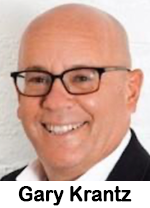 acquisition of AMFM, took on an EVP role at Premiere Networks. He was the president of the fledgling liberal talk radio company Air America and joined Westwood One after Air America shut down in 2006. TALKERS publisher Michael Harrison states, “This is a devastating loss to the radio industry. I had the privilege of working with Gary all the way back to my music radio days when he was a young executive at the old MJI Broadcasting with major industry players like Julie Talbott and Josh Feigenbaum in the early days of our careers. He has subsequently worn a number of key management and entrepreneurial hats in the business – all reflecting his dedication to professionalism and quality. He was very well liked and respected by broadcasters on both sides of the Atlantic. He will be missed.” A service will be held on January 26, 2025 at Riverside Memorial Chapel at 180 West 76th Street, New York, NY 10023. In lieu of flowers, the family requests donations be made to the American Foundation for Suicide Prevention in Gary Krantz’s memory.
acquisition of AMFM, took on an EVP role at Premiere Networks. He was the president of the fledgling liberal talk radio company Air America and joined Westwood One after Air America shut down in 2006. TALKERS publisher Michael Harrison states, “This is a devastating loss to the radio industry. I had the privilege of working with Gary all the way back to my music radio days when he was a young executive at the old MJI Broadcasting with major industry players like Julie Talbott and Josh Feigenbaum in the early days of our careers. He has subsequently worn a number of key management and entrepreneurial hats in the business – all reflecting his dedication to professionalism and quality. He was very well liked and respected by broadcasters on both sides of the Atlantic. He will be missed.” A service will be held on January 26, 2025 at Riverside Memorial Chapel at 180 West 76th Street, New York, NY 10023. In lieu of flowers, the family requests donations be made to the American Foundation for Suicide Prevention in Gary Krantz’s memory.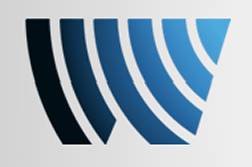 number of retailers shopped, retailers shopped most often, brand perceptions, and advertising recall have recovered; 2) Brand equity and shopping patterns for the top two performers (AutoZone and O’Reilly Auto Parts) are stable to up. The second-tier players are slightly off; 3) AM/FM radio and podcasts are the ideal platforms to advertise auto aftermarket. TV underperforms with category usage and brand equity: Heavy AM/FM radio and podcast listeners visit more retailers in the category, make more shopping trips, and spend far more than the average. Two key consumer segments, do-it-yourselfers and ultra-heavy shoppers are more likely to be heavy AM/FM radio listeners. TV viewers are weak category users.
number of retailers shopped, retailers shopped most often, brand perceptions, and advertising recall have recovered; 2) Brand equity and shopping patterns for the top two performers (AutoZone and O’Reilly Auto Parts) are stable to up. The second-tier players are slightly off; 3) AM/FM radio and podcasts are the ideal platforms to advertise auto aftermarket. TV underperforms with category usage and brand equity: Heavy AM/FM radio and podcast listeners visit more retailers in the category, make more shopping trips, and spend far more than the average. Two key consumer segments, do-it-yourselfers and ultra-heavy shoppers are more likely to be heavy AM/FM radio listeners. TV viewers are weak category users. 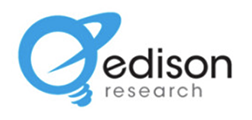 including radio over-the-air and radio streams. The next highest portion, 18%, was spent with owned music such as CDs and downloaded audio files, and 11% of their daily audio time went to streaming. Today, we see the increase in listening from linear sources to more on-demand audio sources such as YouTube for music or music videos (not the YouTube Music streaming service), and podcasts. Americans age 13+ now spend an average of 18% of their audio day listening to streaming music from sources such as Amazon Music, Apple Music, Pandora, and Spotify, 14% listening to YouTube for music, and 10% listening to podcasts. AM/FM radio still takes the largest portion of the audio day on a 13+ basis with 36%, driven heavily by in-car listening.” Edison director of research Laura Ivey adds, “A decade ago Share of Ear was created to answer the question, ‘What do Americans listen to?’ Today we can understand the listening patterns of Americans and see how audio sources have emerged to vie for our daily listening time. There are surely audio developments that we can’t even imagine that will impact our daily audio time over the next 10 years.”
including radio over-the-air and radio streams. The next highest portion, 18%, was spent with owned music such as CDs and downloaded audio files, and 11% of their daily audio time went to streaming. Today, we see the increase in listening from linear sources to more on-demand audio sources such as YouTube for music or music videos (not the YouTube Music streaming service), and podcasts. Americans age 13+ now spend an average of 18% of their audio day listening to streaming music from sources such as Amazon Music, Apple Music, Pandora, and Spotify, 14% listening to YouTube for music, and 10% listening to podcasts. AM/FM radio still takes the largest portion of the audio day on a 13+ basis with 36%, driven heavily by in-car listening.” Edison director of research Laura Ivey adds, “A decade ago Share of Ear was created to answer the question, ‘What do Americans listen to?’ Today we can understand the listening patterns of Americans and see how audio sources have emerged to vie for our daily listening time. There are surely audio developments that we can’t even imagine that will impact our daily audio time over the next 10 years.” 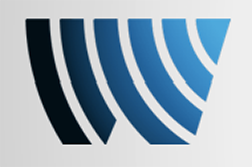 media budget, adding AM/FM radio to a digital/TV plan sharply builds reach. Via Nielsen Commspoint, the media allocation planning tool, a wide range of monthly digital/TV media plans were examined. Very small, light, medium, and heavy campaigns were examined. The lightest digital/TV campaign reached 10% of the market. The heaviest reached 60%. Then a 20% allocation of AM/FM radio was introduced. The results were stunning. Across the seven monthly campaigns, from the lightest to the heaviest, the addition of AM/FM radio generated significant lifts in reach. Shifting 20% of the lightest TV/digital campaign to AM/FM radio caused reach to double. Introducing the 20% allocation of AM/FM radio to medium-sized campaigns causes reach to soar by 36% to 55%. Even the heaviest TV and digital campaign saw reach grow 20% with the addition of AM/FM radio to the plan.”
media budget, adding AM/FM radio to a digital/TV plan sharply builds reach. Via Nielsen Commspoint, the media allocation planning tool, a wide range of monthly digital/TV media plans were examined. Very small, light, medium, and heavy campaigns were examined. The lightest digital/TV campaign reached 10% of the market. The heaviest reached 60%. Then a 20% allocation of AM/FM radio was introduced. The results were stunning. Across the seven monthly campaigns, from the lightest to the heaviest, the addition of AM/FM radio generated significant lifts in reach. Shifting 20% of the lightest TV/digital campaign to AM/FM radio caused reach to double. Introducing the 20% allocation of AM/FM radio to medium-sized campaigns causes reach to soar by 36% to 55%. Even the heaviest TV and digital campaign saw reach grow 20% with the addition of AM/FM radio to the plan.” 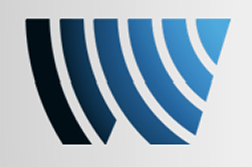 content, providing an accurate assessment of the audience’s attentiveness and engagement.” Some of the key findings include: 1) Despite lacking “sight, sound, and motion,” AM/FM radio programming was +13% more engaging than Mediaprobe’s norm for television in the U.S. For advertisers, this means the AM/FM radio context for their ads has greater engagement than the TV context; 2) Overall, AM/FM radio advertising’s Emotional Impact Score (EIS) outperformed TV advertising by +12%. These new findings validate the recently released Dentsu/Lumen study, which revealed audio ads outperform video for attention and brand recall; 3) AM/FM radio news was the most impactful genre, consistently measuring as a high-quality contextual environment for advertising (+14% greater than Mediaprobe TV News norms and +8% than total AM/FM radio); 4) Mediaprobe audio benchmarks reveal the sound contrast between AM/FM radio programming and the ads drives higher attention and brand recall. For example, ads with music and jingles perform very well in spoken word programming due to the contrast; and 5) Creative best practices: Use female voiceovers, jingles, and include five brand mentions.
content, providing an accurate assessment of the audience’s attentiveness and engagement.” Some of the key findings include: 1) Despite lacking “sight, sound, and motion,” AM/FM radio programming was +13% more engaging than Mediaprobe’s norm for television in the U.S. For advertisers, this means the AM/FM radio context for their ads has greater engagement than the TV context; 2) Overall, AM/FM radio advertising’s Emotional Impact Score (EIS) outperformed TV advertising by +12%. These new findings validate the recently released Dentsu/Lumen study, which revealed audio ads outperform video for attention and brand recall; 3) AM/FM radio news was the most impactful genre, consistently measuring as a high-quality contextual environment for advertising (+14% greater than Mediaprobe TV News norms and +8% than total AM/FM radio); 4) Mediaprobe audio benchmarks reveal the sound contrast between AM/FM radio programming and the ads drives higher attention and brand recall. For example, ads with music and jingles perform very well in spoken word programming due to the contrast; and 5) Creative best practices: Use female voiceovers, jingles, and include five brand mentions. 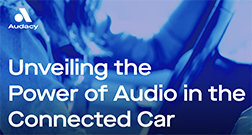 audio experienced a 17% decline. The study identified radio app and voice users as super users who shared common traits and expectations. Audacy notes, “These highly engaged individuals demand seamless transitions for Audio across their home, phone, and car systems… Moreover, they exhibit readiness to spend, particularly in high-budget categories like home improvement and financial services, responding actively to targeted radio ads. For advertisers, crafting personalized ads targeted at these audiences presents an exceptional opportunity to guide listeners through all stages of the purchase funnel.” Other key findings of the study include: 1) Nearly half of radio app users sought information about advertised products online after hearing an ad in the car, compared to 22% of all listeners; 2) 31% of radio app users and 27% of voice users visited the store they heard about, doubling the rate of all listeners; and 3) 27% of radio app users purchased advertised products, more than doubling the rate of all listeners.
audio experienced a 17% decline. The study identified radio app and voice users as super users who shared common traits and expectations. Audacy notes, “These highly engaged individuals demand seamless transitions for Audio across their home, phone, and car systems… Moreover, they exhibit readiness to spend, particularly in high-budget categories like home improvement and financial services, responding actively to targeted radio ads. For advertisers, crafting personalized ads targeted at these audiences presents an exceptional opportunity to guide listeners through all stages of the purchase funnel.” Other key findings of the study include: 1) Nearly half of radio app users sought information about advertised products online after hearing an ad in the car, compared to 22% of all listeners; 2) 31% of radio app users and 27% of voice users visited the store they heard about, doubling the rate of all listeners; and 3) 27% of radio app users purchased advertised products, more than doubling the rate of all listeners.  aggressive AM/FM streaming app acquisition strategy by negotiating with three targets simultaneously. It is now clear that market conditions are unfavorable for securing the largest acquisition as our first target. As such, to optimize shareholder value we are withdrawing the current S-1 on file that contemplates the Radio FM acquisition.”
aggressive AM/FM streaming app acquisition strategy by negotiating with three targets simultaneously. It is now clear that market conditions are unfavorable for securing the largest acquisition as our first target. As such, to optimize shareholder value we are withdrawing the current S-1 on file that contemplates the Radio FM acquisition.” those living in suburban or urban areas. Rural listeners spend 43% of their daily audio listening time with AM/FM radio and radio streams, compared with urban listeners who spend 34% of their time with AM/FM radio and radio streams. Meanwhile, Urban listeners spend over twice as much of their daily audio time with podcasts as rural listeners. Urban listeners spend 13% of their daily audio time with podcasts compared with rural listeners who spend 6% of their daily time with podcasts.” Interestingly, if you combine the AM/FM listening and podcast listening numbers for Urban, Suburban and Rural listeners, these numbers are essentially the same – between 47% and 49%. Edison notes, “It appears that the ‘time budget’ for radio and podcasting combined is consistent across locations; it is just the apportionment of that time that varies.”
those living in suburban or urban areas. Rural listeners spend 43% of their daily audio listening time with AM/FM radio and radio streams, compared with urban listeners who spend 34% of their time with AM/FM radio and radio streams. Meanwhile, Urban listeners spend over twice as much of their daily audio time with podcasts as rural listeners. Urban listeners spend 13% of their daily audio time with podcasts compared with rural listeners who spend 6% of their daily time with podcasts.” Interestingly, if you combine the AM/FM listening and podcast listening numbers for Urban, Suburban and Rural listeners, these numbers are essentially the same – between 47% and 49%. Edison notes, “It appears that the ‘time budget’ for radio and podcasting combined is consistent across locations; it is just the apportionment of that time that varies.” small attributed lift (0% to +3% lift) to excellent (+15% or more). Across the 17 campaigns analyzed, the average attributed lift was +14%. Three tax preparation service campaigns achieved “excellent” status ranging from a +30% to +48% attributed lift; 2) On average, the 17 AM/FM radio campaigns saw the highest percentage of impressions at the start of the week, peaking on Mondays and Tuesdays. Compared to the Nielsen impressions, the AM/FM radio campaigns outperformed on Saturday, Sunday, and Monday. Advertisers should increase their use of AM/FM radio on the weekends. AM/FM radio campaigns on weekends drive impact and results; and 3) On average, evenings have a greater share of attributed web sessions due to available devices and free time of consumers. Mornings historically underdeliver their share of impressions since consumers are busy getting ready for work and school. This expected pattern should not be a reason to move campaign weight out of morning drive. Morning drive exposure results in web sessions during later dayparts when consumers have the time and available devices to respond.
small attributed lift (0% to +3% lift) to excellent (+15% or more). Across the 17 campaigns analyzed, the average attributed lift was +14%. Three tax preparation service campaigns achieved “excellent” status ranging from a +30% to +48% attributed lift; 2) On average, the 17 AM/FM radio campaigns saw the highest percentage of impressions at the start of the week, peaking on Mondays and Tuesdays. Compared to the Nielsen impressions, the AM/FM radio campaigns outperformed on Saturday, Sunday, and Monday. Advertisers should increase their use of AM/FM radio on the weekends. AM/FM radio campaigns on weekends drive impact and results; and 3) On average, evenings have a greater share of attributed web sessions due to available devices and free time of consumers. Mornings historically underdeliver their share of impressions since consumers are busy getting ready for work and school. This expected pattern should not be a reason to move campaign weight out of morning drive. Morning drive exposure results in web sessions during later dayparts when consumers have the time and available devices to respond.  from the study include: 1) the proportion of AM/FM radio in-car listening rose 9% year-over-year and is on par with pre-pandemic levels of listening; 2) spoken-word content listening is at an eight-year high with 39% of ad-supported listening (including AM/FM, streaming and podcasts) devoted to news/talk, talk, and sports; and 3) looking at Persons 25-54, the share of ad-supported audio time spent with personalities/talk shows has increased the most – from 11% of ad-supported listening in Q4 2016 to 19.4% in Q3 of 2023.
from the study include: 1) the proportion of AM/FM radio in-car listening rose 9% year-over-year and is on par with pre-pandemic levels of listening; 2) spoken-word content listening is at an eight-year high with 39% of ad-supported listening (including AM/FM, streaming and podcasts) devoted to news/talk, talk, and sports; and 3) looking at Persons 25-54, the share of ad-supported audio time spent with personalities/talk shows has increased the most – from 11% of ad-supported listening in Q4 2016 to 19.4% in Q3 of 2023.  AM/FM radio listeners are 39% more likely to pay $301+ to have their taxes prepared and show greater familiarity, interest, consideration, and usage of tax category brands; 2) AM/FM radio ads drive site traffic for tax preparation brands: In the LeadsRx attribution study of a tax preparation service’s multi-wave campaign, AM/FM radio generated between a 43% to 47% increase in website traffic; 3) Branding early and often in tax preparation service ads drives more site traffic: LeadsRx found the top three creative executions that drove site traffic for a tax preparation service had the marketer’s brand name within the first five seconds of the ad; and 4) compared to other radio formats, a 2023 tax prep campaign on news/talk and sports stations realized a higher percentage share of interactions than the percentage share of their Nielsen ad impressions.
AM/FM radio listeners are 39% more likely to pay $301+ to have their taxes prepared and show greater familiarity, interest, consideration, and usage of tax category brands; 2) AM/FM radio ads drive site traffic for tax preparation brands: In the LeadsRx attribution study of a tax preparation service’s multi-wave campaign, AM/FM radio generated between a 43% to 47% increase in website traffic; 3) Branding early and often in tax preparation service ads drives more site traffic: LeadsRx found the top three creative executions that drove site traffic for a tax preparation service had the marketer’s brand name within the first five seconds of the ad; and 4) compared to other radio formats, a 2023 tax prep campaign on news/talk and sports stations realized a higher percentage share of interactions than the percentage share of their Nielsen ad impressions. 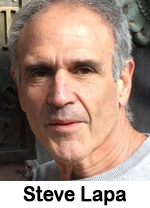 Survey says nearly half of all Americans over 13, nearly 135 million, listen to spoken word formats. The growth curve boasts an eye opening 52% jump in time spent listening at home.
Survey says nearly half of all Americans over 13, nearly 135 million, listen to spoken word formats. The growth curve boasts an eye opening 52% jump in time spent listening at home. word, which is a 55% increase over nine years ago (20%); 2) Spoken word listening at home has grown dramatically: 60% of the total daily audio time spent with spoken word audio is at home, 24% in the car, 13% at work, and 3% at some other location. The time spent listening to spoken word audio at home has grown to 41 daily minutes in 2023 from 27 daily minutes in 2014. Increases in at-home spoken word audio listening are seen across every hour in the listening day; 3) Spoken word listening in-car has shifted post-pandemic, but AM/FM radio remains on top: Of all the daily time spent listening to spoken word audio, time spent listening in the car has declined from 36% in 2014 to 24% in 2023. In the car, 62% of spoken word audio consumed by those in the U.S. age 13+ is to AM/FM radio content, including over the air and streams; 4) For the first time ever, the mobile device is the primary way people listen to spoken word: 39% of spoken word audio consumed daily by those age 13+ in the U.S. is on a mobile device, followed by 35% on an AM/FM radio receiver. At home, 41% of spoken word audio is consumed on a mobile device, and at work, 47% of spoken word is consumed on a mobile device. AM/FM radio receivers still dominate in-car, garnering 60% of the spoken word audio listening there; and 5) Podcasts represent a large and growing share of spoken word listening: Podcasts now represent over one-third (36%) of time spent with spoken word audio. Twenty-eight percent of time spent listening to podcasts goes to NPR/public radio. At home, 40% of spoken-word audio listening goes to podcasts.
word, which is a 55% increase over nine years ago (20%); 2) Spoken word listening at home has grown dramatically: 60% of the total daily audio time spent with spoken word audio is at home, 24% in the car, 13% at work, and 3% at some other location. The time spent listening to spoken word audio at home has grown to 41 daily minutes in 2023 from 27 daily minutes in 2014. Increases in at-home spoken word audio listening are seen across every hour in the listening day; 3) Spoken word listening in-car has shifted post-pandemic, but AM/FM radio remains on top: Of all the daily time spent listening to spoken word audio, time spent listening in the car has declined from 36% in 2014 to 24% in 2023. In the car, 62% of spoken word audio consumed by those in the U.S. age 13+ is to AM/FM radio content, including over the air and streams; 4) For the first time ever, the mobile device is the primary way people listen to spoken word: 39% of spoken word audio consumed daily by those age 13+ in the U.S. is on a mobile device, followed by 35% on an AM/FM radio receiver. At home, 41% of spoken word audio is consumed on a mobile device, and at work, 47% of spoken word is consumed on a mobile device. AM/FM radio receivers still dominate in-car, garnering 60% of the spoken word audio listening there; and 5) Podcasts represent a large and growing share of spoken word listening: Podcasts now represent over one-third (36%) of time spent with spoken word audio. Twenty-eight percent of time spent listening to podcasts goes to NPR/public radio. At home, 40% of spoken-word audio listening goes to podcasts.  Folks in the Gen Z and millennial demographics are heavily
Folks in the Gen Z and millennial demographics are heavily  monthly, and 77% have ever listened to podcasts. “All of this podcast and AM/FM radio audience duplication means there are great cross-promotion opportunities.” Among the podcast audience, over half the ad-supported time spent goes to podcasts themselves at a 53% share. AM/FM radio follows with a 37% share. Distantly following are ad-supported SiriusXM (4%), ad-supported Spotify (3%), and ad-supported Pandora (3%). Additionally, MARU/Matchbox was commissioned to study Cumulus Media radio listeners who listened for at least an hour to stations in Dallas, Chicago, Detroit, San Francisco and Atlanta and were exposed to promos for eight Cumulus Podcast Network podcast titles. Overall, 54% of the Cumulus radio audience were aware of the eight Cumulus Podcast Network podcasts. A much larger promotion of heavy AM/FM radio listeners (67%) were aware of the podcast titles, and a whopping 75% of the heavy AM/FM radio streaming audience were aware of the podcast titles.
monthly, and 77% have ever listened to podcasts. “All of this podcast and AM/FM radio audience duplication means there are great cross-promotion opportunities.” Among the podcast audience, over half the ad-supported time spent goes to podcasts themselves at a 53% share. AM/FM radio follows with a 37% share. Distantly following are ad-supported SiriusXM (4%), ad-supported Spotify (3%), and ad-supported Pandora (3%). Additionally, MARU/Matchbox was commissioned to study Cumulus Media radio listeners who listened for at least an hour to stations in Dallas, Chicago, Detroit, San Francisco and Atlanta and were exposed to promos for eight Cumulus Podcast Network podcast titles. Overall, 54% of the Cumulus radio audience were aware of the eight Cumulus Podcast Network podcasts. A much larger promotion of heavy AM/FM radio listeners (67%) were aware of the podcast titles, and a whopping 75% of the heavy AM/FM radio streaming audience were aware of the podcast titles. 